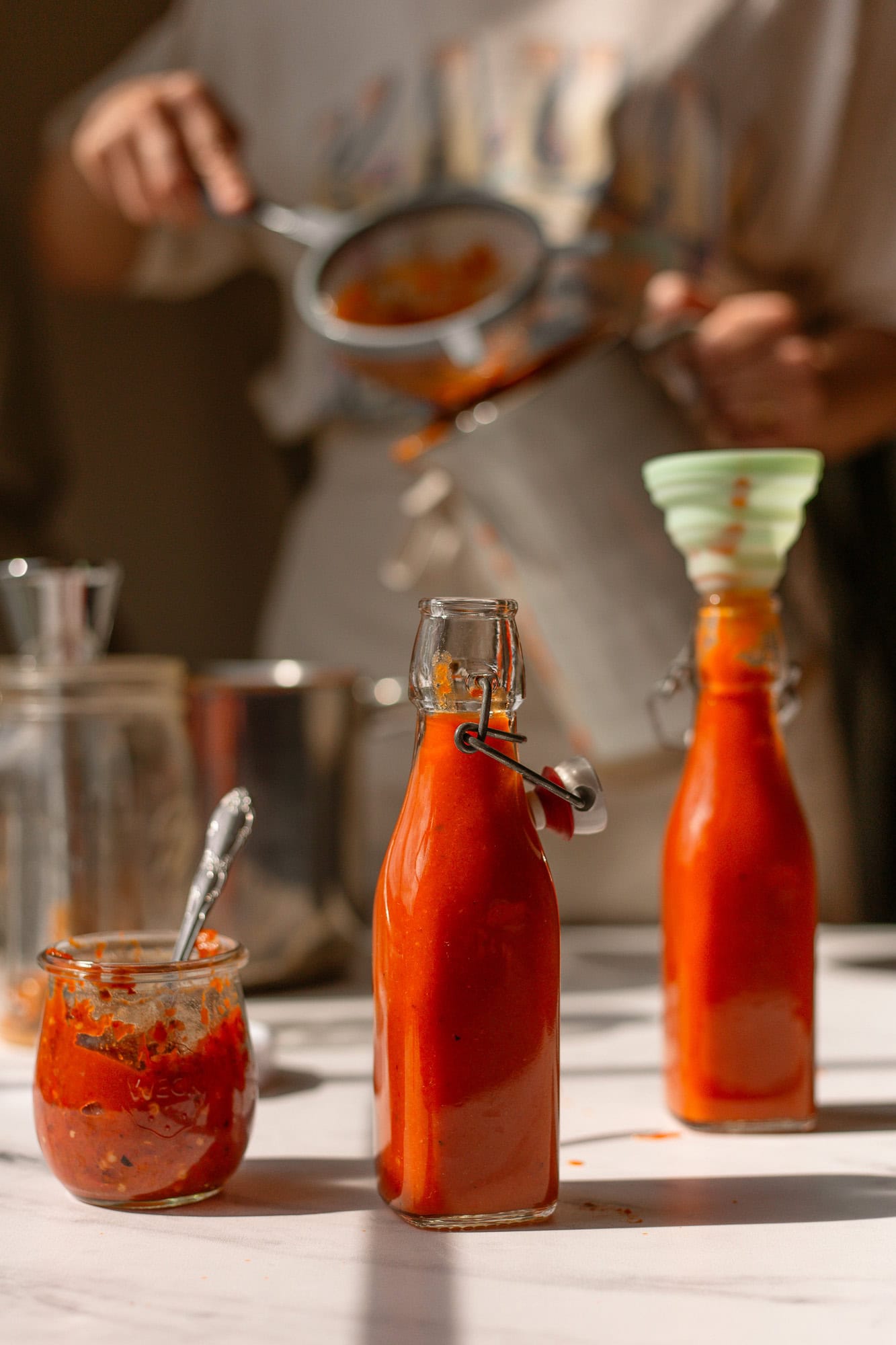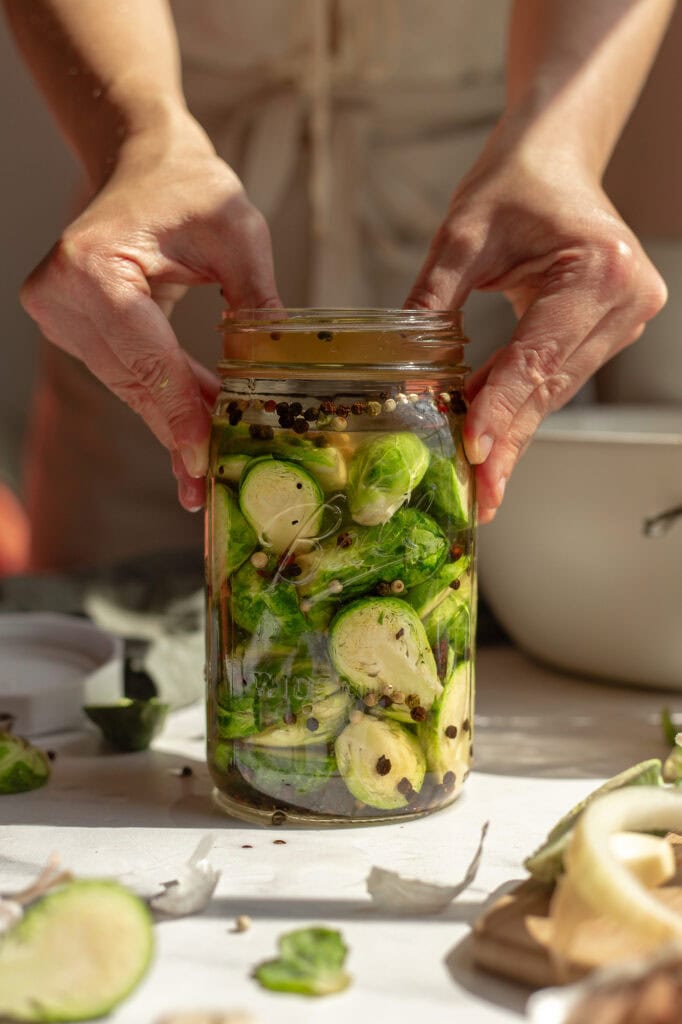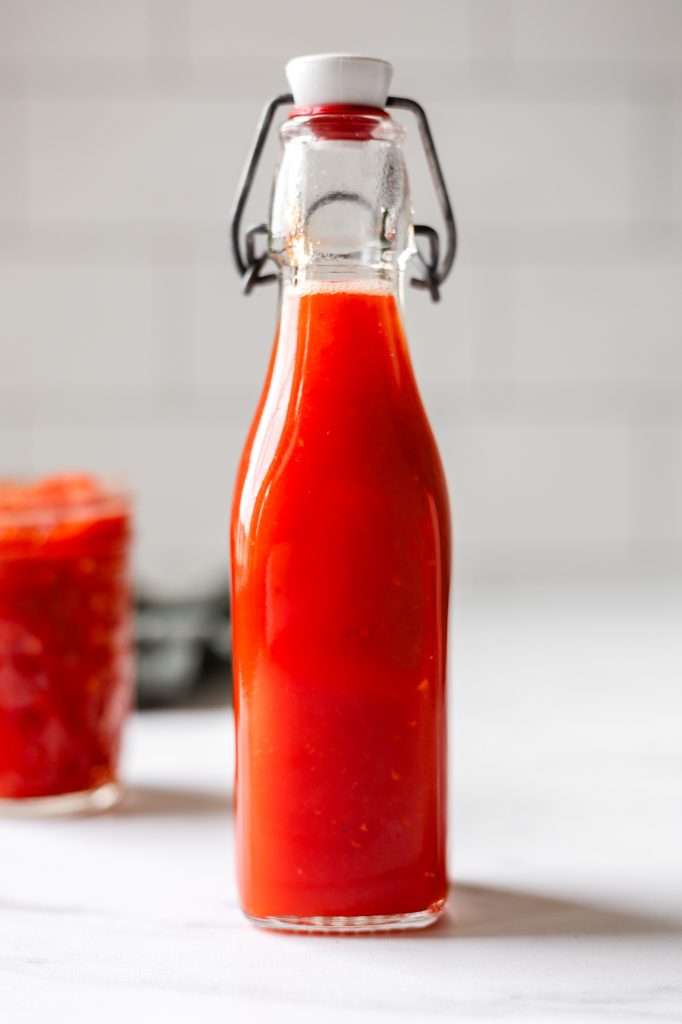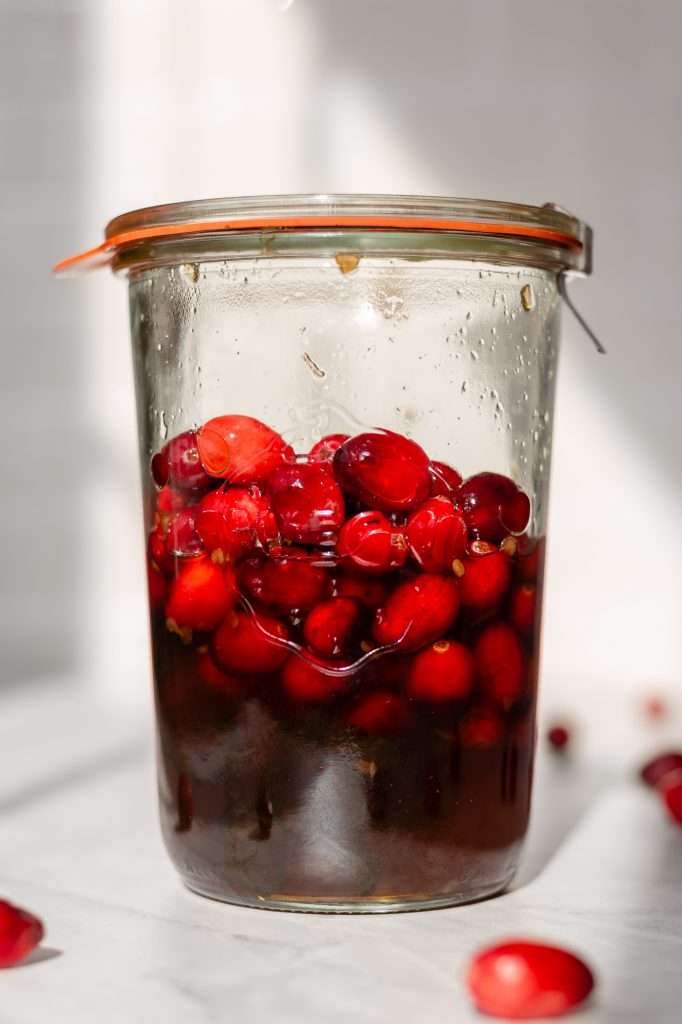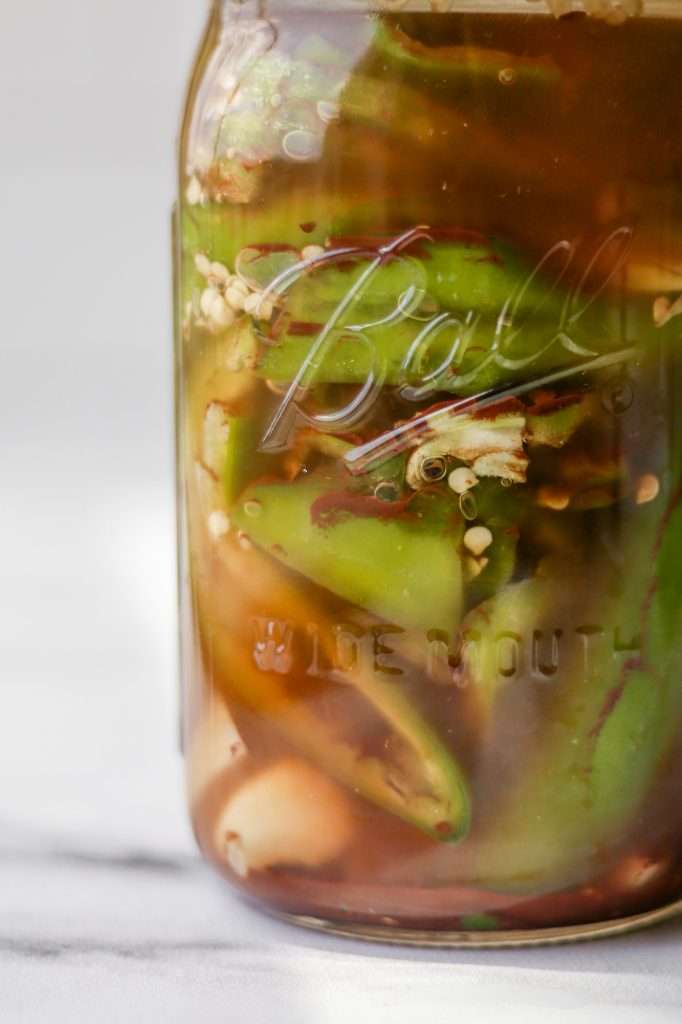The Peppers You Need For This Fermented Hot Sauce
- Red Habaneros: I get these from a local Latin American grocery store. If you can only find orange habaneros, those will work perfectly too, but red makes for the best color. As always, organic is best.
- Red Bell Pepper: I like red bell pepper best for flavor and color in this fermented hot sauce, but you can use any color bell pepper you want. Red, orange and yellow are best, and try to use homegrown or organic for best results. If you use green bell pepper, the sauce may end up a brown color.
- Dried Guajillo Chiles: Any dried chiles will do in this recipe, but I like Guajillo chiles the best. I also get my dried chiles from the local Latin American grocery store. I think they add the perfect balance of flavor and heat.
If you want a smokier flavor, you can use dried chipotle chiles instead of Guajillo. If you like a super hot sauce, you can also sub some of the red bell pepper for more habanero in the recipe!

My secret ingredient for naturally emulsified hot sauce
This hot sauce is naturally thick and emulsified, with no need for cooking, added ingredients, or emulsifiers. I have a secret ingredient for this perfect, smooth, fermented hot sauce texture–it’s butter nut squash! (or any winter squash, including pumpkin). When lactic acid bacteria ferment the starches in winter squash, they naturally convert them into emulsifying compounds called exopolysaccharides. So when we blend our hot sauce after fermentation, there’s no watery separation in the bottle!

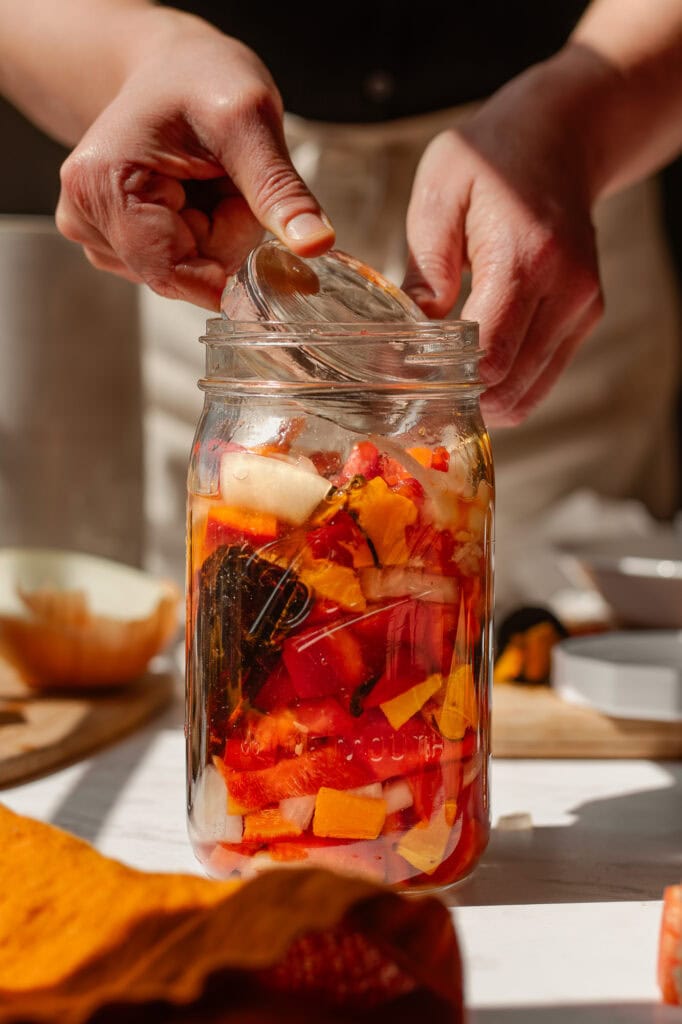
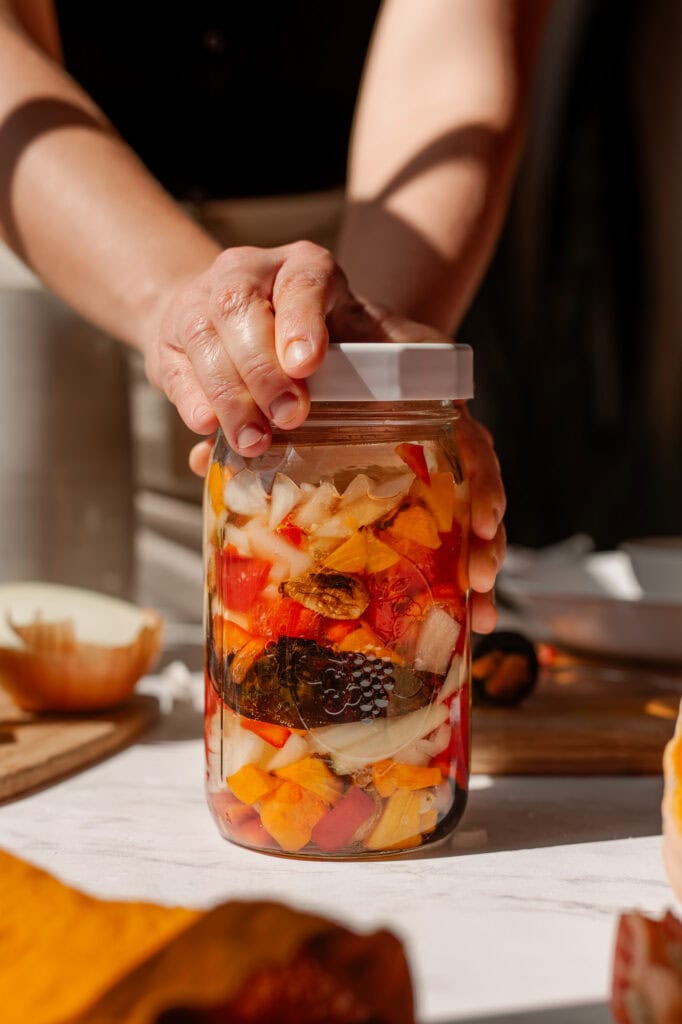
Roasting Ingredients Before Fermentation
I absolutely love roasting ingredients to incorporate into fermentation. For this recipe, we only roast two ingredients: winter squash and garlic. The rest of the ingredients are raw and still contain all the wild microbes we need to initiate fermentation.
Fermented Hot Sauce Timeline
Here is the timeline for fermenting hot sauce at a moderate room temperature (about 76° F). Cooler temperatures will slow things down, and warmer temperatures speed up this timeline.
- 24 – 72 hours: All contents in the jar should be submerged beneath the brine.
- 72 hours – 9 days: After 72 hours you should see lots of bubbles. This is when you will burp the jar (open the lid and make sure everything is submerged below the brine; clean the lid off if necessary). This is stage two of vegetable fermentation. Leuconostoc bacteria begin to thrive and produce a lot of carbon dioxide. Gram negative organisms die off. You may notice an acidic smell and color changes during this time.
- 9 – 14 days: The bubbles in the brine will decrease as the ferment leaves stage two and enters stage three. The brine will be very cloudy and start to develop a pleasant sour smell. The peppers and squash will also start to change color from vibrant to more muted colors. Lactobacillus species are most abundant during this period.
- 14 – 28 days: Lactobacillus comprise most or all of the microbial population. They produce copious amounts of lactic acid, making the ferment smell even more pleasantly sour. This is when the pepper, squash and garlic mixture becomes well preserved. Wait for the peppers to stop bubbling, then move on to blending and straining the sauce.


Bottling and Using All Parts
Since you strain the sauce, you will have some pepper pulp left over. Please do not throw it away! Put it in a mason jar and keep it to cook with. It is fantastic in soups, stews, braises, and especially ramen.
Essentially this recipe gives you two sauces, garlic sriracha hot sauce, and a garlic pepper paste. yay!

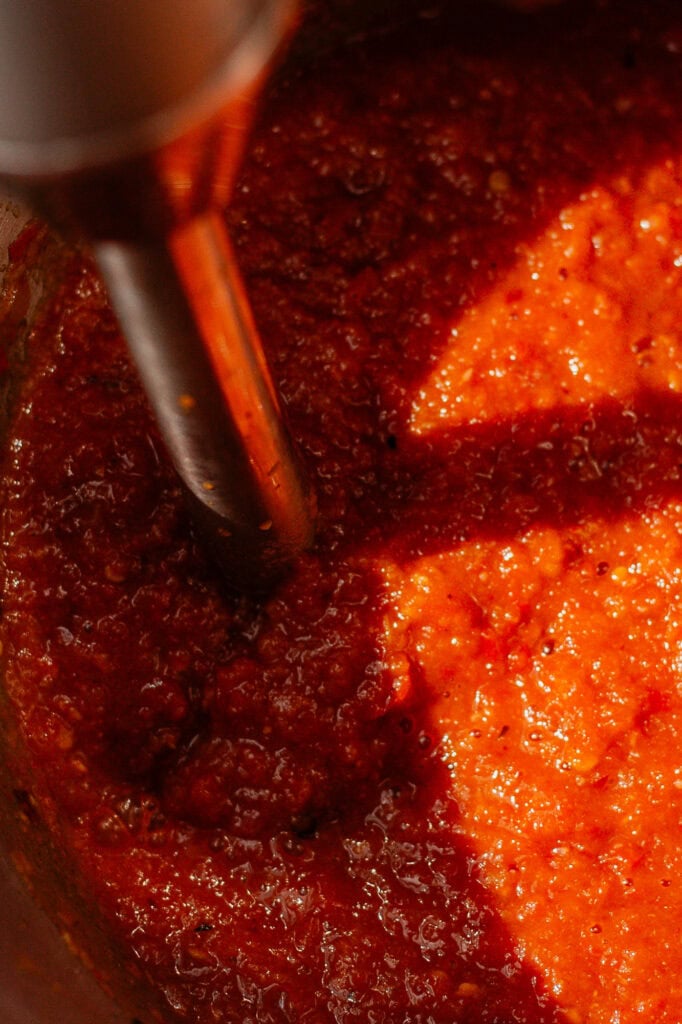
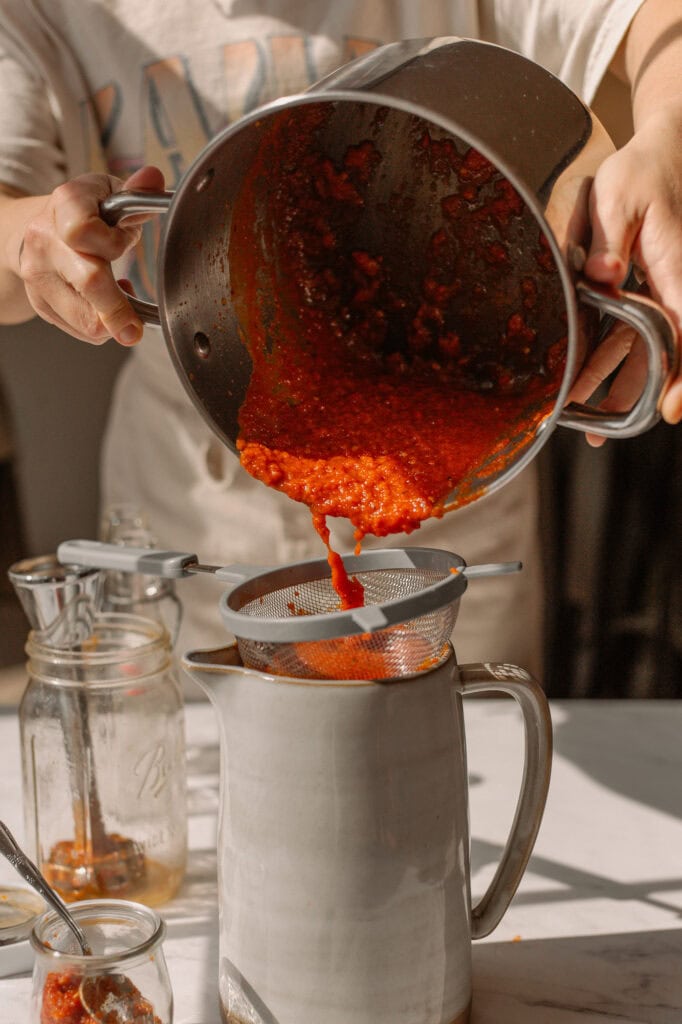


How long does fermented hot sauce keep?
This hot sauce keeps for at least a year in the fridge, likely longer. We usually use up all our fermented hot sauce quickly, so I’ve never kept any beyond a year.
Do I need to store it in the fridge?
Yes! This hot sauce is not cooked, so it contains live active microbes that will continue to ferment at room temperature. It needs to be stored in the fridge to slow the fermentation and preserve the flavor profile.

Why do you cook some fermented hot sauces, but not this one?
This one is not a “sweet heat” hot sauce. My pineapple hot sauce and my sriracha hot sauce recipes intentionally have a sweetness as part of the flavor profile. In order for some sweetness to remain in the flavor, we have to cook those to stop the fermentation. Otherwise, all the sweetness would be fermented into acidity. I also cook my other fermented hot sauces as a way to thicken them naturally. This hot sauce is naturally thickened with roasted winter squash instead and is not sweet.


Fermented Hot Sauce with Habaneros and Roasted Winter Squash
This fermented hot sauce is made with roasted winter squash, roasted garlic, red habaneros and Guajillo chiles. It’s naturally smooth, naturally emulsified via the fermented winter squash, and contains live active probiotics.
- Prep: 30 minutes
- Total Time: 504 hours 30 minutes
Ingredients
- 30 grams red habaneros
- 250 grams red bell pepper*
- 3 dried Guajillo chiles
- 100 grams yellow onion
- 200 grams butternut squash, peeled*
- 50 grams garlic*
- 200 grams water
- 38 grams salt
Instructions
- This recipe at 1x works best with a 32-ounce jar for the fermentation and a 16-ounce bottle for the sauce. Wash your fermentation equipment, including the jar, weight, and lid.
- Peel and chop the butternut squash and peel and crush the garlic cloves.
- Line a baking sheet with parchment paper and preheat your oven to 450° F
- Dry roast (NO OIL) the squash and garlic for about 20 minutes until lightly browned and crispy on some edges.
- Wash all the peppers and slice/chop them up. (Wear gloves if you are sensitive to peppers).
- Place your kitchen scale on the counter. Turn it on and set it to weigh in grams. Place a mixing bowl on your kitchen scale and tare/zero the scale.
- Add everything except the salt and water to a bowl, measuring out the designated amount.
- Remove the bowl from your scale and set it aside. Place your empty, clean mason jar on the scale, and tare/zero the scale. Ensure your scale is still set to grams, and add the designated amount of salt and filtered water to your mason jar.
- Stir until all the salt is dissolved.
- Add the rest of the ingredients, into the mason jar with the salt water. You will need to mash the peppers into the jar with a tamper or wooden spoon to pack them in, as you do the brine will come up.
- Place your fermentation weight in the jar making sure to submerge all of the pepper pieces and weight fully in the liquid. (it can be helpful to use an outer cabbage leaf or lettuce leaf to tuck everything in before placing the fermentation weight).
- Secure the lid to the jar and ferment at room temperature for at least 21 days. I suggest fermenting until the bubbles stop.
- After fermentation, add everything to a blender. Blend on high until smooth.
- Place a colander over a large pitcher or pot and strain the sauce. You can mash the pulp in the colander with a spoon to get all the juices out. (don’t forget to save the pulp! put it in a little jar to use in cooking.)
- Using a funnel, bottle the sauce. Store in the refrigerator. Use within a year for the best flavor. (If you’d like to gift this sauce, it can be out of the fridge for a bit).
Notes
- Sub some of the bell pepper for more habanero if you like super spicy hot sauce!
- I used butternut squash but any winter squash will work great.
- The garlic and squash amounts are the pre-roasted weight.
- You can use other peppers in this recipe, as long as the total pepper weight is 280 grams. Peppers above 500,000 Scoville units contain an extremely high concentration of capsaicin. At those levels, capsaicin is bactericidal and can prevent natural fermentation. Choose your peppers accordingly


